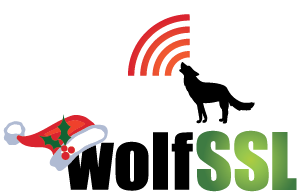When looking to store your cryptographic secrets, it is important to have a good platform to store them on. Even more important is the ease of accessing and using those secrets. With wolfTPM, we have support for all TPM 2.0 APIs. Additionally we provide the following wrappers: Key Generation/Loading RSA encrypt/decrypt ECC sign/verify ECDH NV […]
Read MoreMore TagCategory: wolfBoot
wolfBoot v2.6.0 Now Available
The wolfSSL team has released version 2.6.0 of wolfBoot, the lightweight and portable secure bootloader for embedded systems. This update expands platform coverage, improves support for external memory layouts, and adds key performance optimizations for a range of architectures. It also includes critical fixes and brings updated module integration across the wolfSSL ecosystem. New Platform […]
Read MoreMore TagwolfSSL Expands Embedded Security with HighTec Compiler and RTOS Support
The embedded systems landscape continues to evolve rapidly, with developers demanding robust security solutions that seamlessly integrate with their preferred development tools and real-time operating systems. Today, we’re excited to announce that wolfSSL’s comprehensive security suite will support the HighTec compiler and RTOS, bringing enterprise-grade cryptographic capabilities to even more embedded applications. Comprehensive Security for […]
Read MoreMore TagRetrofitting Legacy Bootloaders with wolfBoot: a Modern Secure Bootloader for Embedded Systems
Introduction: Modernizing Legacy Devices with Secure Boot Embedded developers often face the challenge of adding a secure bootloader for embedded systems to legacy hardware without overhauling the entire boot process. Many automotive and industrial devices – for example, older PowerPC-based electronic control units (ECUs) in vehicles or aging industrial controllers – still run insecure or […]
Read MoreMore TagOpen Source Secure Boot Meets Open Hardware: Announcing wolfBoot Integration with TROPIC01 Secure Element
We are excited to announce our new partnership with Tropic Square and the integration of wolfBoot with their TROPIC01 secure element. Tropic Square has developed an open architecture hardware secure element for applications, including IoT devices, crypto wallets, or any modern application that prioritizes security. Unlike most hardware secure elements, the TROPIC01 solution is built […]
Read MoreMore TagMeeting Secure Boot Compliance Requirements
In today’s regulatory environment, implementing a secure bootloader is no longer just a best practice – it’s becoming a compliance mandate. Recent cybersecurity regulations across the globe (from the EU to the US and beyond) explicitly call for measures like secure boot and firmware authenticity verification as requirements for connected devices. In this updated post […]
Read MoreMore TagwolfSSL’s µITRON support and HSM integration
We have received many inquiries about wolfSSL’s µITRON support for years. The fact that µITRON is used so widely by wolfSSL customers is unique to Japan, but wolfSSL supports µITRON in all wolfSSL products to meet the needs of Japanese customers. ITRON is an RTOS specification definition, so it is available in many commercial versions, […]
Read MoreMore TagwolfBoot release: v.2.5.0
We are pleased to announce the release of wolfBoot 2.5.0, the newest version of our universal secure bootloader. This release marks another milestone in the continued evolution of wolfBoot, reinforcing its relevance as a cutting-edge secure boot solution for embedded systems. WolfBoot 2.5.0 brings expanded hardware support, major new features, and a host of improvements […]
Read MoreMore TagwolfBoot Now Supports NXP’s New MCX A and MCX W Microcontrollers
wolfSSL is excited to announce that wolfBoot, our secure bootloader, now supports NXP’s MCX A and MCX W microcontroller families. This means developers can bring wolfBoot’s robust secure boot and firmware update capabilities to NXP’s latest low-power and wireless-enabled chips. The MCX A and MCX W series are NXP’s next-generation Arm Cortex-M33 based MCUs, designed […]
Read MoreMore TagµITRON Support in wolfBoot
We regularly receive inquiries regarding µITRON support in wolfSSL products—and understandably so. As a specification for real-time operating systems (RTOS), ITRON has led to a wide variety of implementations. These include open-source projects such as TOPPERS/ASP, as well as commercial RTOS offerings like eT-Kernel (by eSOL), µC3 (by eForce), and NORTi (by MISPO), among many […]
Read MoreMore Tag
